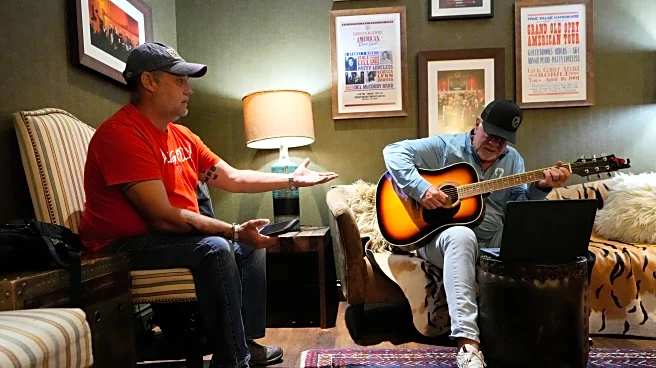What's Happening?
Thomas Kaplan, a billionaire philanthropist, is exploring innovative ways to democratize art ownership by offering shares of his extensive collection of Rembrandt paintings on the public stock market.
Kaplan, who owns the largest private collection of Rembrandts, plans to fractionalize the Leiden Collection and launch it as an IPO, potentially on the New York Stock Exchange. This initiative, named Project Minerva, aims to allow investors to own portions of the collection, making 17th-century Dutch masterpieces accessible to a broader audience. Kaplan's collection is currently on display at the Norton Museum of Art in Florida, and he continues to loan artworks to museums worldwide.
Why It's Important?
Kaplan's plan to fractionalize his art collection represents a novel approach to art ownership, potentially transforming how art is valued and accessed. By offering shares of the collection, Kaplan seeks to engage younger generations and democratize access to high-value artworks. This initiative could set a precedent for other collectors and institutions, encouraging alternative models for art investment and appreciation. Additionally, Kaplan's efforts to promote Rembrandt's legacy align with his philanthropic goals, as proceeds from the sale of artworks will support wild cat conservation through his charity, Panthera.
What's Next?
Kaplan has set a deadline for next summer to determine the feasibility of Project Minerva as a business plan. The initiative faces challenges, including ensuring the collection's integrity while providing investment value. Kaplan is considering spinning off some artworks into subsidiaries to facilitate public ownership. The success of this project could revolutionize the art world, offering new opportunities for collectors and investors while preserving the cultural significance of the artworks.
Beyond the Headlines
Kaplan's approach to art ownership raises questions about the intersection of art and finance, exploring how traditional art markets can adapt to modern investment strategies. The initiative also highlights the potential for art to serve as a vehicle for social and environmental causes, as Kaplan's philanthropic efforts are intertwined with his passion for art. This project may inspire further exploration of how art can be leveraged for broader societal impact.













